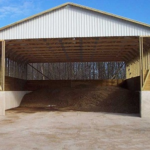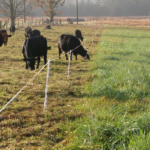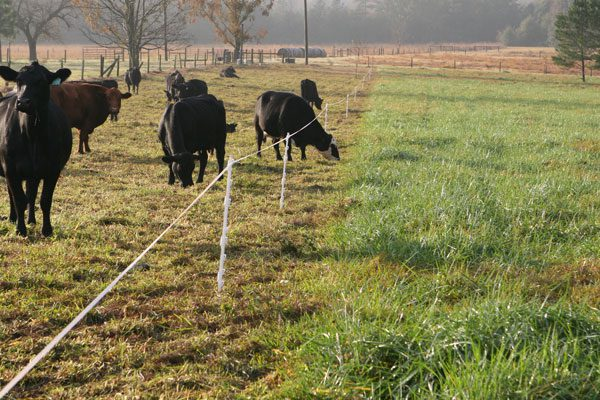Livestock Assistance
LIVESTOCK ASSISTANCE
- Animal Units Calculator
An Animal Unit (AU) is a standard unit of measurement for livestock. One Animal Unit is equivalent to the number of livestock of that specie it takes to reach 1,000 lbs ODA has regulatory permit authority for facilities that house in excess of 1,000 AU of any livestock specie.
- Manure Management
- Ohio Livestock and Manure Rules of Law – Livestock laws in Ohio can be different depending upon the size of the operation. Facilities with over 1,000 AU are required to have ODA permits to install and operate and have special sets of rules spelled out for them in the permit. Facilities with fewer than 1,000 AU do not have a permit requirement, but still need to adhere to certain laws as they apply to specific aspects of farming. Below is a list of some related rules and laws:
- Senate Bill 1
- Ohio Livestock and Manure Rules of Law – Livestock laws in Ohio can be different depending upon the size of the operation. Facilities with over 1,000 AU are required to have ODA permits to install and operate and have special sets of rules spelled out for them in the permit. Facilities with fewer than 1,000 AU do not have a permit requirement, but still need to adhere to certain laws as they apply to specific aspects of farming. Below is a list of some related rules and laws:
https://farmoffice.osu.edu/blog-tags/sb-1
- ODA Ag Pollution Abatement Program
https://agri.ohio.gov/divisions/soil-and-water-conservation/agricultural-pollution-abatement
- Western Lake Erie Basin
https://agri.ohio.gov/divisions/soil-and-water-conservation/resources/manure_application
- Ohio Permitted Facilities
https://lpelc.org/overview-of-odas-division-of-livestock-environmental-permitting/
- Comprehensive Nutrient Management Plans (CNMP)- Custom nutrient plans for livestock manure applications. Based on soil test analysis, crop yields, manure analysis and USDA/NRCS 590 specifications. Includes setback distances for sensitive areas, application methods and timing restrictions.
NRCS 590 specification:
- Ohio Livestock Manure Management Guide https://agcrops.osu.edu/sites/agcrops/files/imce/fertility/bulletin_604.pdfOhio
- Manure Analysis Program – SWCD “turn-key” program for liquid or solid manure test analysis and interpretation. Livestock owner collects sample and brings to SWCD office. SWCD mails manure sample to laboratory and provides analysis with recommendations to landowner based on results from lab sample. This is a fee based program that covers shipping and laboratory cost.
- Collecting Sample
https://extension.psu.edu/manure-sampling-for-nutrient-management-planning
- Interpreting Analysis
https://ohioline.osu.edu/factsheet/anr-55
- Spreader Calibration
https://u.osu.edu/beef/2016/11/09/manure-spreader-calibration/
https://extension.psu.edu/manure-spreader-calibration
- Manure Storage– At certain times of the year, due to weather related issues, a livestock producer may need to temporarily store manure until field conditions are suitable to apply the manure. The following are recommended storage options often utilized:
- Solid Manure Storage Structure
 – a building specifically built and utilized for storing manure. They are generally 3 sided with one end open for access and roofed. They are well ventilated to allow for drying of manure.
– a building specifically built and utilized for storing manure. They are generally 3 sided with one end open for access and roofed. They are well ventilated to allow for drying of manure. - Liquid Manure Storage Structure – liquid manure is usually stored in underground concrete tanks while some farms store liquid manure in earthen storage ponds and lagoons. Manure flows from the animal facility to these storage locations either by pump or gravity.
- Solid Manure Storage Structure
- Manure Storage– At certain times of the year, due to weather related issues, a livestock producer may need to temporarily store manure until field conditions are suitable to apply the manure. The following are recommended storage options often utilized:
Stockpiling – stockpiling is a short-term practice for solid manure where manure is taken from the livestock facility, hauled to the application field and piled until it can be spread. SWCD staff works with producers to recommend locations for stockpiling that reduce the risk of runoff into sensitive areas and address any potential other issues. ODA permitted facilities also have specific state guidelines that they are required to adhere to for stockpiling manure.
USDA Manure Stockpile Guild Sheet
- Livestock Mortality Composting – Livestock death is an unfortunate reality that comes with raising livestock. In Ohio it is legal for a livestock producer to compost their livestock as means of disposal. Producers must attend a state sanctioned training course and become state certified to legally compost livestock mortality in the state. Contact Crawford County OSU Extension for training opportunities http://crawford.osu.edu/
- Pasture Management – Well managed pastures can increase grazing efficiency, allowing for more animals to be grazed on the same number of acres, which can mean increased profits. The SWCD will do on-farm visits to provide information and advice for improving grazing opportunities.
- Grazing Management Plan (GMP)
 – SWCD staff can assist with developing a custom grazing plan for local landowners. This plan provides guidance rotating animals through a system to maximize grazing efficiency. GMP’s typically Include suggested animal numbers, acres of forage needed, paddock size and layout, and rotation length. They also provide information on fencing, water facilities and nutrient management for pasture production.
– SWCD staff can assist with developing a custom grazing plan for local landowners. This plan provides guidance rotating animals through a system to maximize grazing efficiency. GMP’s typically Include suggested animal numbers, acres of forage needed, paddock size and layout, and rotation length. They also provide information on fencing, water facilities and nutrient management for pasture production.
- Grazing Management Plan (GMP)
- Pasture Management – Well managed pastures can increase grazing efficiency, allowing for more animals to be grazed on the same number of acres, which can mean increased profits. The SWCD will do on-farm visits to provide information and advice for improving grazing opportunities.
Ohio Agronomy Guide to Forage Management
Guide to Pasture Condition Scoring
- Forage Options – Choosing and establishing the correct forage is one of the most important aspects of grazing success. The following forage seeding guide goes into seeding rates and dates for a variety of forages -both grasses and legumes-along with various planting methods.
- UDSA Seeding Forage Seeding Guide https://efotg.sc.egov.usda.gov/api/CPSFile/27028/000_OH_EST_Appendix_A-Forage_Production_and_Erosion_(Con)trol_2019
- Pure Live Seed (PLS) Calculations – Pure live seed is the amount of viable seed or seed that will germinate as a percent of the total weight. Calculating PLS is important to establishing the forage quantity and quality your looking to achieve.
- Forage Options – Choosing and establishing the correct forage is one of the most important aspects of grazing success. The following forage seeding guide goes into seeding rates and dates for a variety of forages -both grasses and legumes-along with various planting methods.
